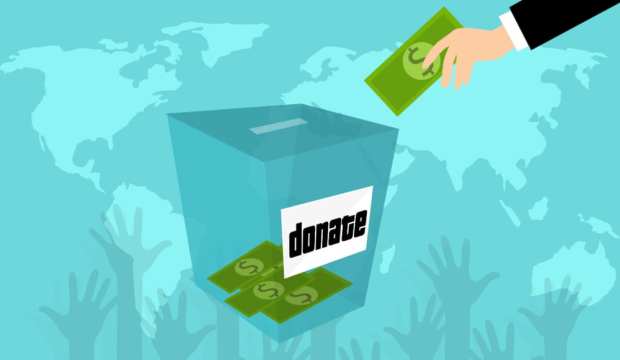How Nonprofits Can Turn T&E Into A Donation Driver

When a company realizes it’s time to improve its corporate travel and expense (T&E) management strategy, there are a few items on the list of must-haves: Spend control, transparency and analytics are probably high on that list.
Migrating from a manual T&E program — traditionally involving employees using their personal cards, filing an expense report, submitting receipts and requiring administrators to conduct a lot of number-crunching — to a process that promotes control and transparency can deliver immense value to companies of all sizes and types. The same goes for nonprofits, which, like any other company, wants efficiency and compliance in the T&E process.
“Companies [that] are smaller, in many cases, don’t have the type of budget to allow them to implement best practices that larger corporations would have in place,” explained Tom Griffin, corporate treasurer of Blackbaud, a software company that develops solutions tailored to the nonprofit space, in a conversation with PYMNTS. “The idea was [to] figure out a way to provide the level of integration into a solution that gave our smaller customers the advantage that larger corporations have in the way of best practices.”
For Blackbaud, that idea turned into the launch of its expense management solution designed for nonprofits, announced earlier this month. The tool integrates a commercial credit card, enabling employees to use company funds without having to front the bill, while administrators can retain control over that spend as it relates to spending limits, categories and more.
Those benefits address the pain points of manual expense management that many small businesses (SMBs) face. However, as David Vroblesky, Blackbaud’s senior product manager, explained to PYMNTS, the impact of obtaining greater efficiency, control and visibility in the T&E process can be even greater to a nonprofit.
“As a nonprofit, you are operating under different spend restrictions that may come from large donors or grantors,” he explained. “It’s really important when you have those restrictions on spending of funds that you have appropriate measures to be able to stop an action that shouldn’t occur from happening.”
Nonprofits will often not receive grant money until they actually spend money and submit that expense to be reimbursed by the grantor, noted Vroblesky. So, for nonprofits, every expense must not only be recorded and analyzed to assess their own spend, but it must be appropriately categorized and tagged to show grantors and auditors.
Like many SMBs, small nonprofits can struggle to allocate the resources necessary to digitize the back office. Vroblesky added that the pressure of tight margins means any extra cash available at a nonprofit will likely go into funding its cause — and not upgrading administrative processes and technologies.
When a nonprofit takes the step to embrace technology and automation, however, the administrative burden of reviewing expense reports, reimbursing employees and analyzing spend is lifted, giving such businesses more time to focus on their missions of social good.
Griffin noted that integrating a corporate card product with an expense management platform is also key to enabling nonprofits to automatically control and record spend, while also providing them the opportunity to obtain rewards from those card programs. As the commercial card industry continues to push for adoption, reward programs are becoming an increasingly attractive incentive for business spenders, offering a chance for corporate spend to become another revenue generator.
Vroblesky pointed to another way that a digital, automated T&E program can evolve into an important source of capital for the nonprofit sector in particular — and it all comes down to spend data.
“At a for-profit company, you may not care how much money you spend at different merchants,” he said. “For nonprofits, that’s very valuable data. All of that data can be used as leverage when you reach out to these corporations for sponsorships and corporate donations.”
Like many SMBs, nonprofits — especially smaller ones — often continue to rely on paper receipts and expense sheets to track their spend. As corporates move further into their digital adoption journeys, nonprofits are following suit.
The reduced reliance on cash among consumers, for example, has led nonprofits to embrace the mobile point of sale (mPOS) to accept digital donations in person, or to integrate online payment technologies that allow these firms to accept donations online in a secure fashion.
The key to promoting FinTech adoption in the nonprofit space seems to be the opportunity to save nonprofit employees time, so they can allocate more of their resources to doing good, rather than analyzing expense reports. Vroblesky noted that nonprofit workers and volunteers are already overwhelmed with work; manual T&E shouldn’t be an additional burden.
“Nonprofits in general will go above and beyond, and do a whole lot more than what’s in their job description,” he said. “It’s our duty to be able to support them as much as we can using technology.”
